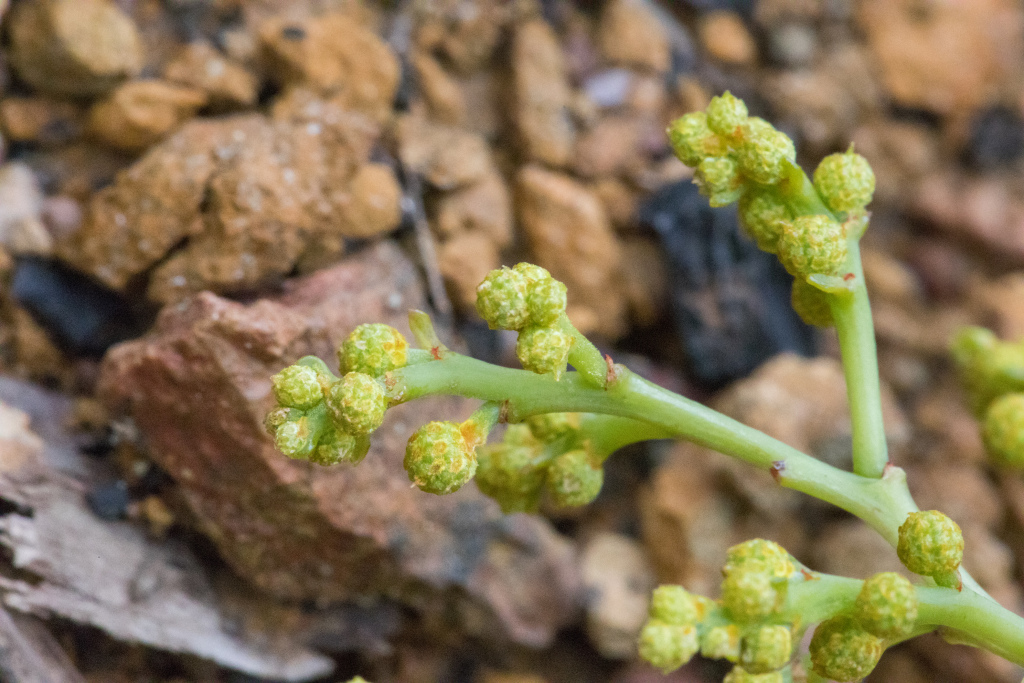Acacia falciformis
DC. Large-leaf Hickory-wattleShrub or tree, to c. 12 m high; branchlets glabrous. Phyllodes more or less pendulous, usually falcate, 10–22 cm long, 15–40 mm wide, narrowed at base, grey-green to glaucescent, glabrous; finely and pinnately veined, midrib prominent; gland 1–3 cm above the base, margin indented at gland which is connected to midrib by a fine oblique vein. Racemes sometimes in terminal panicles, rachis 2–10 cm long, usually with golden, appressed, minute hairs at least near apices; peduncles 4–10 mm long, usually with golden, appressed, minute hairs; heads globular, 20–30-flowered, creamy-yellow. Flowers 5-merous; sepals united. Pods mostly 5–13 cm long and 1.5–2.5 cm wide, thinly coriaceous, glabrous, slightly pruinose; seeds longitudinal, oblong to somewhat elliptic, 5.5–7 mm long, slightly shiny, black; funicle thickly filiform, dark reddish-brown, often folded below seed, aril clavate. Flowers Nov.–Dec
GipP, CVU, NIS, EGL, EGU, HSF, HNF, MonT, HFE, VAlp. Also Qld, NSW, ACT. Common on tablelands and slopes of the Great Dividing Range, mostly at 500–1100 m altitude, extending from south-east New South Wales through to near Traralgon in Victoria. Grows on clay-loam in dryish forest or woodland.
Acacia falciformis is usually distinguishable from related species with large, falcate phyllodes and broad legumes by the golden appressed hairs on the inflorescence rachis and peduncles (hairs occasionally white or absent), and the phyllodes with their adaxial margin shallowly indented at the gland which is situated 5–30 mm above the pulvinus and connected to the midrib by a fine oblique vein.
Phyllodes are sometimes mottled pinkish-purple upon drying, thus resembling those of A. rubida, a species readily distinguished by its commonly persistent juvenile foliage, peduncles 2–4 mm long, heads light golden and 10–20-flowered, pods 5–8 mm wide and funicles completely encircling the seeds.
Entwisle, T.J.; Maslin, B.R.; Cowan, R.S.; Court, A.B. (1996). Mimosaceae. In: Walsh, N.G.; Entwisle, T.J., Flora of Victoria Vol. 3, Dicotyledons Winteraceae to Myrtaceae, pp. 585–658. Inkata Press, Melbourne.
 Spinning
Spinning

